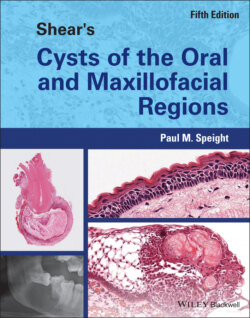Читать книгу Shear's Cysts of the Oral and Maxillofacial Regions - Paul M. Speight - Страница 58
Box 3.4 Histopathology: Key Features
ОглавлениеThe cyst is lined by proliferating non‐keratinised stratified squamous epithelium
In long‐standing and residual cysts, the epithelium may become thin and regular
The cyst wall is composed of inflamed fibrous and granulation tissue
Cholesterol clefts and deposits of haemosiderin are often seen
Hyaline bodies are characteristic, but only seen in about 10% of lesions
Other features include mucous cells, cilia, focal keratinisation, and accumulation of foamy histiocytes
More recently, however, it has been suggested that true cysts and pocket cysts do not differ in any clinically significant way, and that the management can be the same. Ricucci et al. (2020 ) undertook a detailed clinicopathological analysis of 11 true cysts and 12 pocket cysts and found no significant differences in any of the clinical or histological features studied, including signs and symptoms, sex, location, size, or degree of acute inflammation. They also examined the presence of bacteria in the root canal or the cyst lumen and found no differences. The authors concluded that there are no clinically important differences between the two cyst types and that there is no real need to draw a diagnostic distinction between true cysts and pocket (bay) cysts. Furthermore, they also found that both pocket cysts and true cysts were infected, and suggested that there is little evidence for the idea that true cysts may be self‐sustainable independent of the infected root canal.
